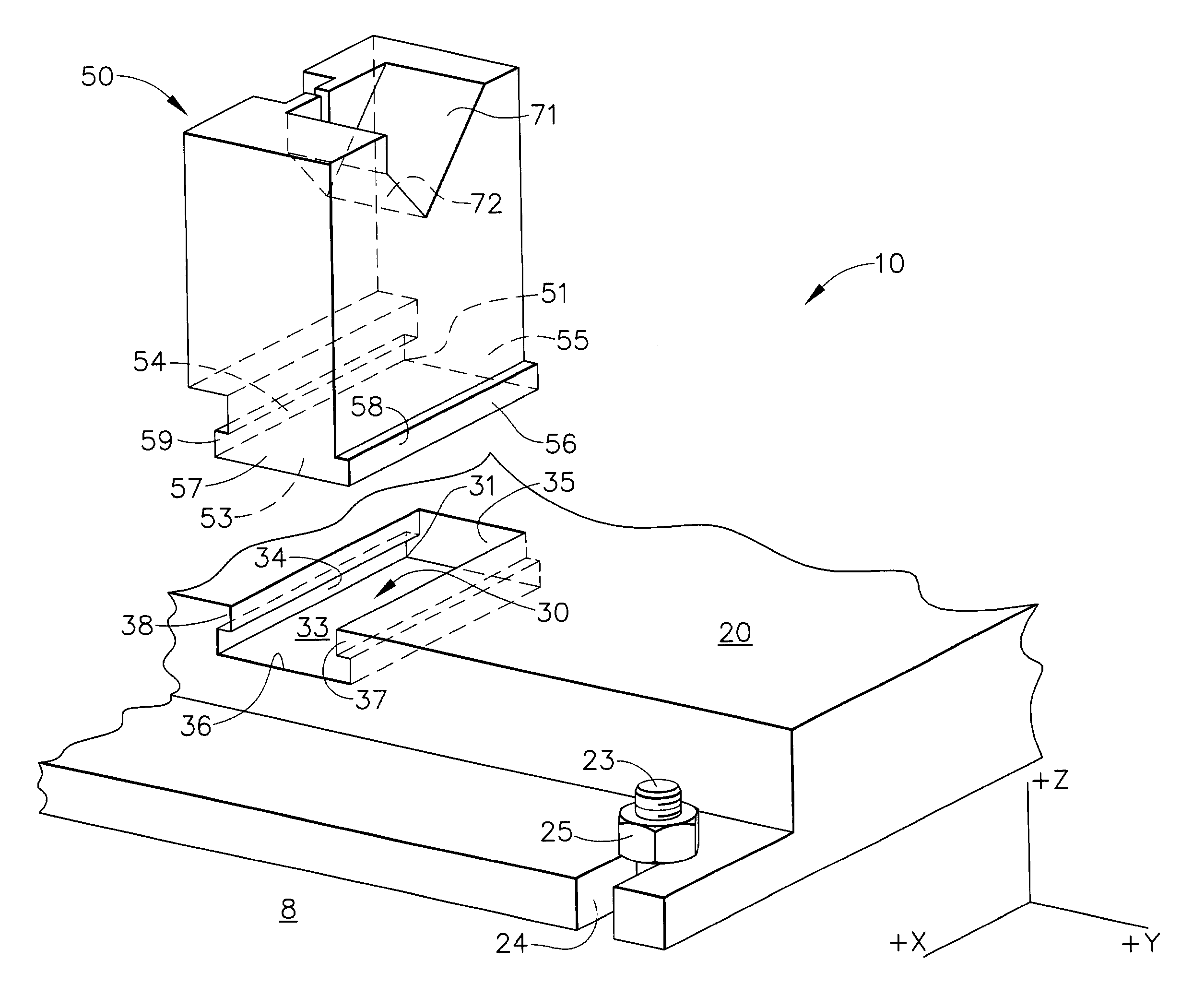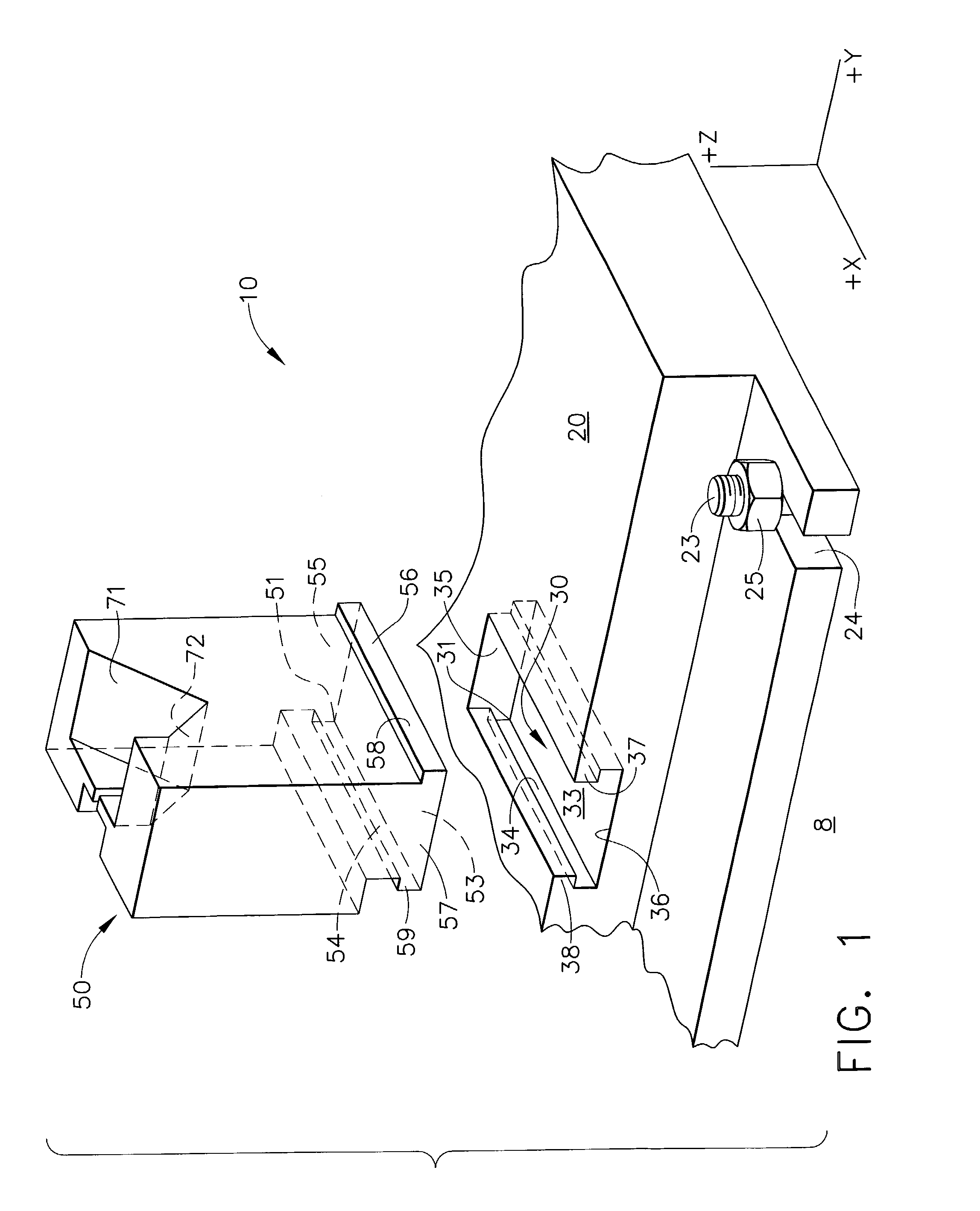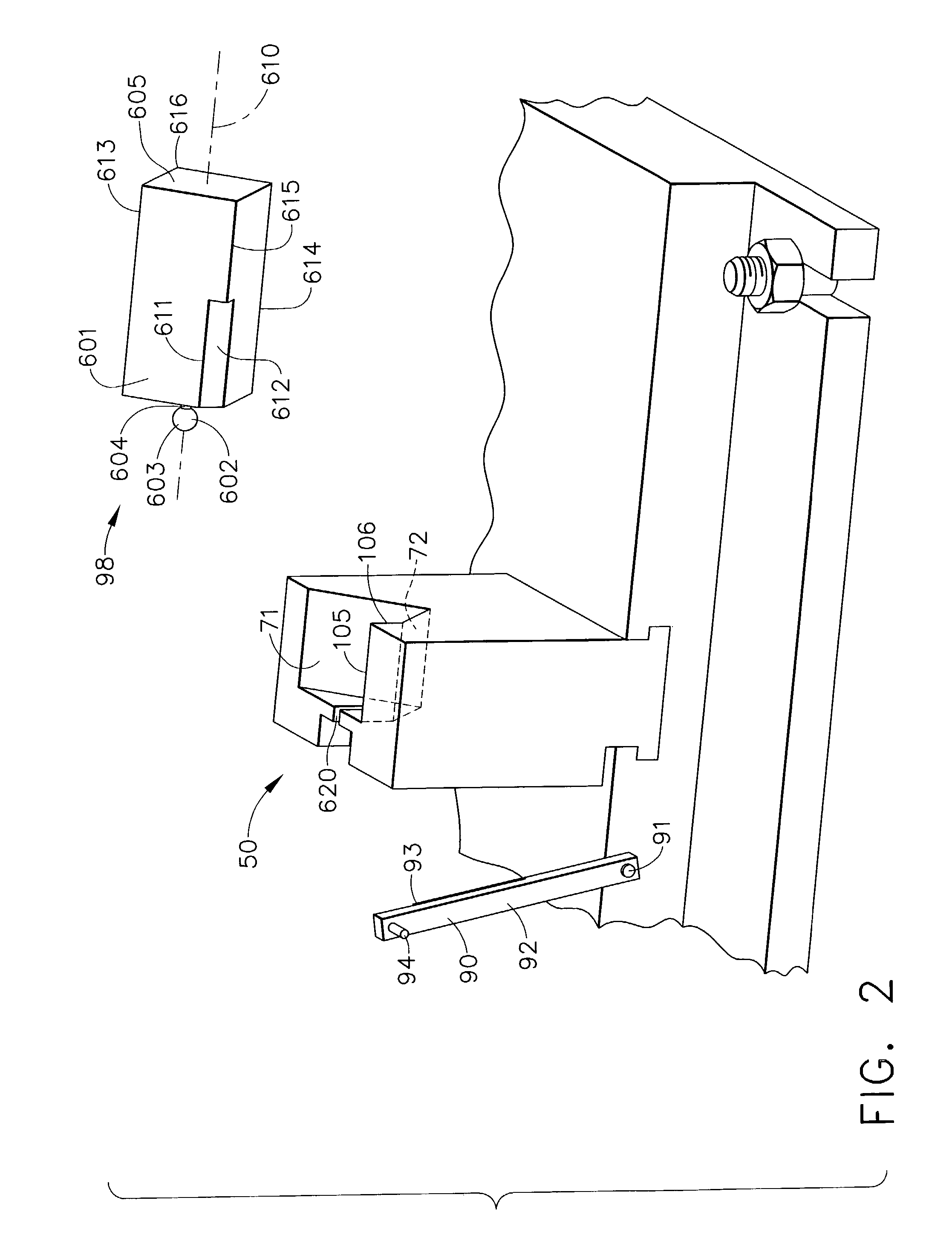Manufacturing cell using tooling apparatus
a tooling apparatus and tooling technology, applied in the direction of turning machines, turning machine accessories, supporters, etc., can solve the problems of significant setup time, significant amount of production time lost in tooling changeover, and trial and error process
- Summary
- Abstract
- Description
- Claims
- Application Information
AI Technical Summary
Benefits of technology
Problems solved by technology
Method used
Image
Examples
Embodiment Construction
Definitions
[0041]As used herein, the phrase “metalworking machine” refers to any machine for the cutting, forming, joining or otherwise processing of a metallic workpiece. The term can include, but is not limited to, a milling machine, a planer, a shaper, a drill press, a vertical turret lathe, a grinder, EDM and ECM machines, a broaching machine, a bending brake, a stamping press, and a welding apparatus. In a broad context, the term can also include such diverse forms of equipment as a lathe or a die casting machine.
[0042]As used herein, the term “tooling” refers to an apparatus for holding and supporting a workpiece while it is being cut, formed, joined or otherwise processed by a metalworking machine.
[0043]As used herein, the term “tool” refers to an apparatus used by a metalworking machine to cut, form, join or otherwise process a workpiece.
[0044]As used herein, the phrase “manufacturing cell” refers to a plurality of metalworking machines, clustered together in close proximity...
PUM
| Property | Measurement | Unit |
|---|---|---|
| angle | aaaaa | aaaaa |
| force | aaaaa | aaaaa |
| size | aaaaa | aaaaa |
Abstract
Description
Claims
Application Information
 Login to View More
Login to View More - R&D
- Intellectual Property
- Life Sciences
- Materials
- Tech Scout
- Unparalleled Data Quality
- Higher Quality Content
- 60% Fewer Hallucinations
Browse by: Latest US Patents, China's latest patents, Technical Efficacy Thesaurus, Application Domain, Technology Topic, Popular Technical Reports.
© 2025 PatSnap. All rights reserved.Legal|Privacy policy|Modern Slavery Act Transparency Statement|Sitemap|About US| Contact US: help@patsnap.com



